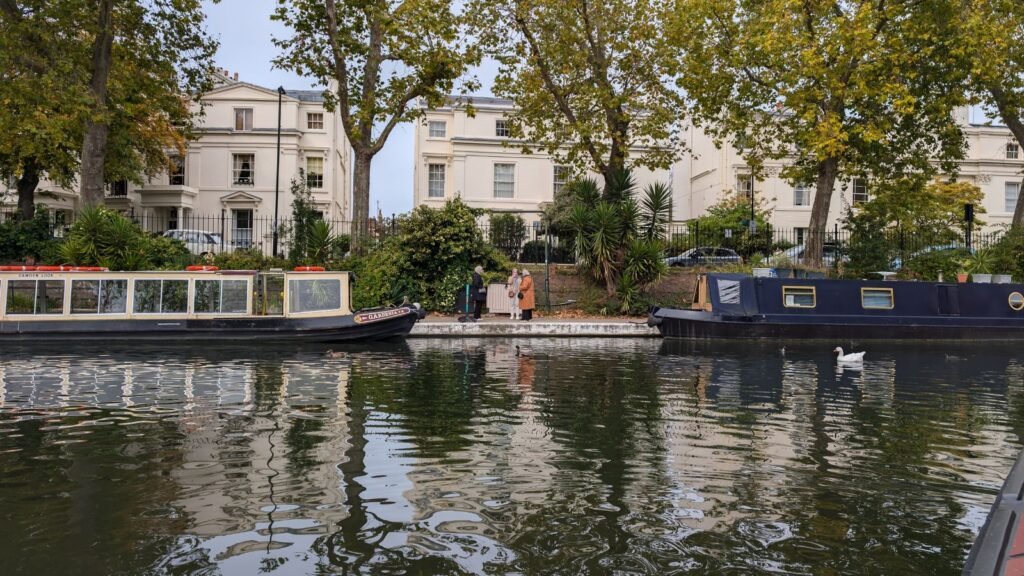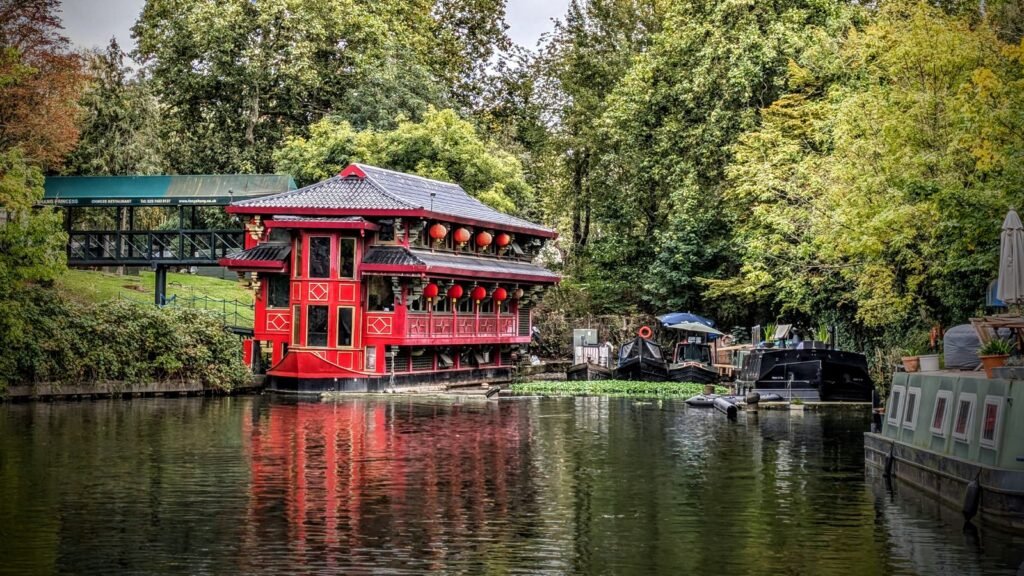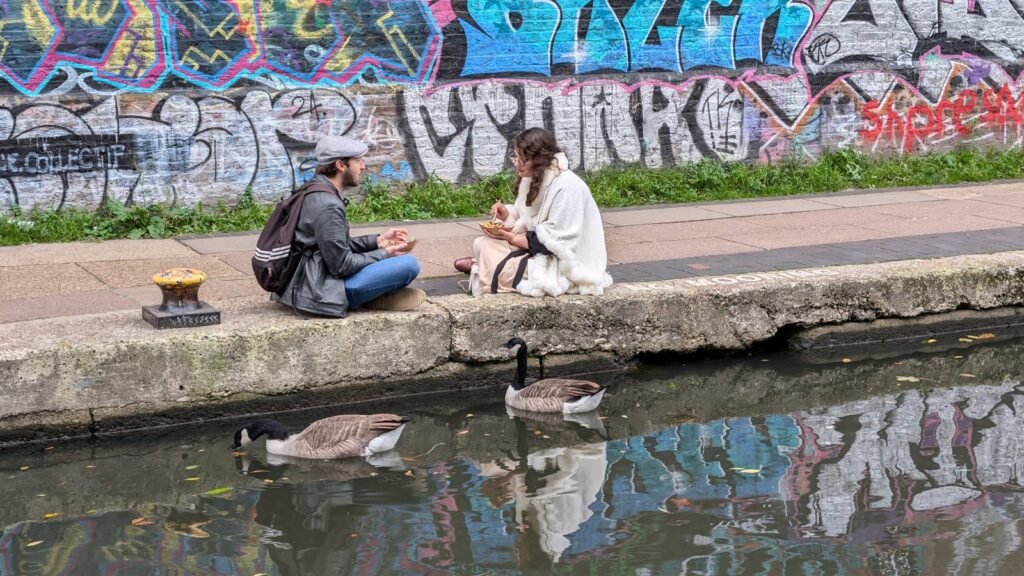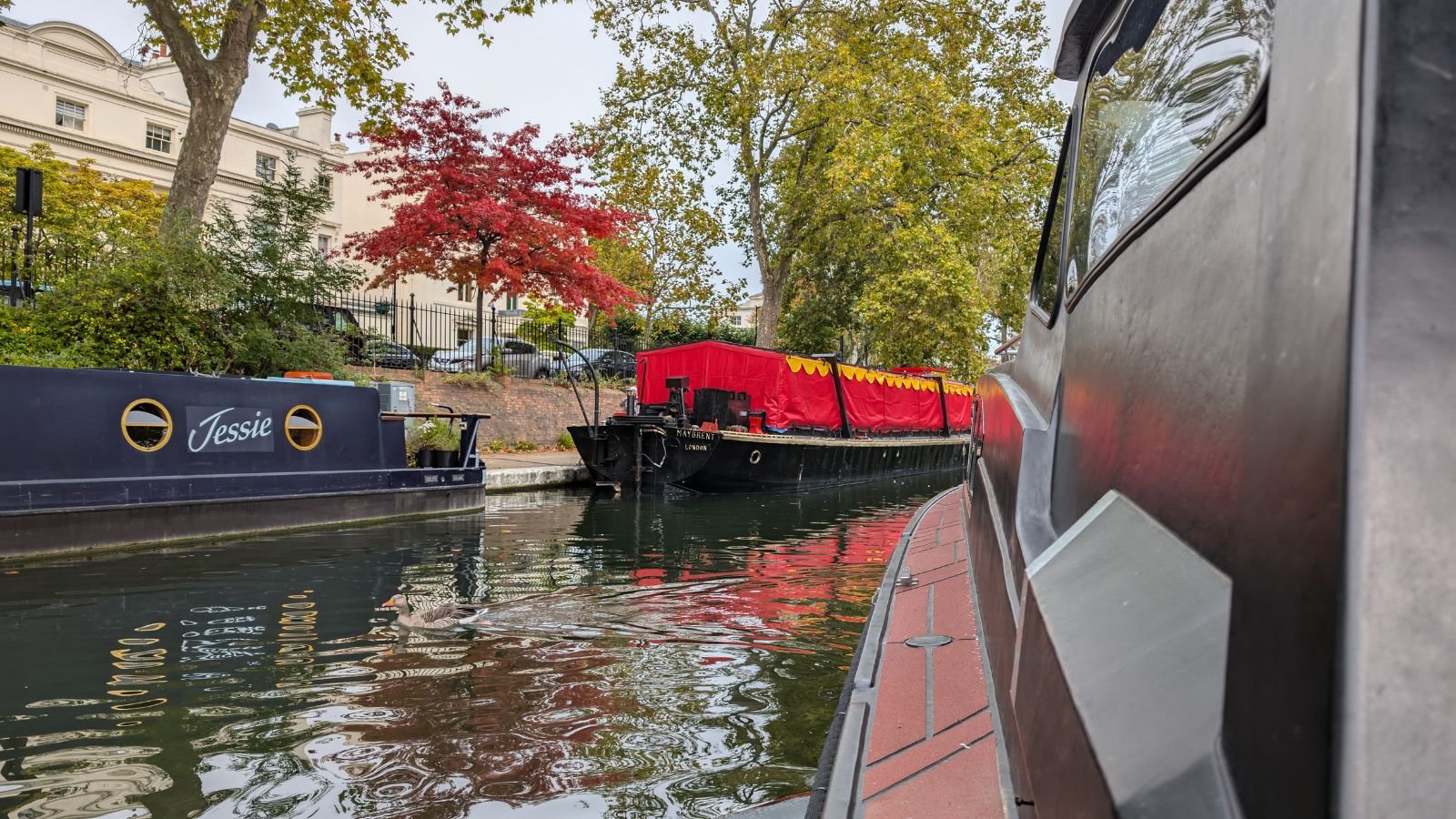How London Found Its Zen in Little Venice
Prefer to listen? Enjoy the full story of Little Venice on Youtube
There’s a curious kind of calm tucked behind Paddington Station, where London forgets it’s London for a while. Little Venice – that watery daydream of canal boats, swans and coffee steam – drifts along quietly, like it missed the memo about rush hour. One moment you’re dodging commuters near Praed Street, and a few steps later you’re watching a heron eye a sandwich from the towpath. It’s almost rude, how peaceful it is.
The name itself carries a whiff of exaggeration, as London often does when it borrows glamour from elsewhere. “Little Venice” sounds like something a nineteenth-century estate agent came up with after a bottle of claret. In truth, nobody’s entirely sure who coined it – Robert Browning and Lord Byron both get mentioned, which feels about right. Byron probably said it with a smirk; Browning, ever the romantic, might have meant it sincerely. Either way, the canals stuck, the name stuck, and the neighbourhood learned to play along.

The setting is disarmingly elegant. White Regency terraces lean over the water, pretending they’ve always been this graceful. The Grand Union Canal slides in from the west, meets the Regent’s Canal from the east, and together they swirl around a spot known as Browning’s Pool. It’s less lagoon, more liquid intersection – the kind of place where Londoners pretend to live slower lives. You can wander from the Warwick Avenue tube stop, and within minutes, everything softens: the sounds, the colours, even your mood.
There’s a rhythm to canal life here. Narrowboats glide by like floating living rooms – curtains, potted plants, bicycles balanced on roofs. They’re often painted in bright reds and blues, names like ‘Doris May’ or ‘Maggie Moo’ stencilled in curlicues. Their owners sip tea on the decks, surrounded by ducks and gossip. It’s the London version of the slow lane, literally. You don’t rush on a narrowboat. You drift, gossip, and occasionally wave at strangers.

The towpath itself might be the most democratic stretch of ground in west London. Cyclists, poets, and joggers coexist without apparent tension. There’s always someone sketching, someone meditating, someone being walked by a dog. If you follow the path east, it takes you towards Paddington Basin – a sleek patch of steel and glass that feels like Little Venice’s modern cousin. Here, futuristic bridges unfurl and curl up again like mechanical origami, and the cafés trade romance for oat lattes and Wi-Fi. It’s where the canal gets a little dressed up for work.
Rembrandt Gardens sits right at the heart of it all, pretending to be a park but really serving as the neighbourhood’s outdoor living room. It’s not big, but it’s beautiful. Named after Amsterdam’s favourite painter, it’s a gentle nod to another canal-obsessed city. On sunny days, it fills up with locals eating lunch on the grass, office workers pretending to read, and tourists discovering that yes, swans really are that large.

And then there’s the Puppet Theatre Barge, one of London’s quiet absurdities. It’s exactly what it sounds like: a puppet theatre on a barge, floating on the canal. Inside, red velvet curtains part for tiny dramas – fairy tales, shadow plays, the occasional Shakespearean adaptation. It’s pure eccentric genius, the sort of thing that could only survive in a city that thrives on charming oddities. Nearby, the Canal Café Theatre does a brisk trade in satire and one-liners above the Bridge House pub. The whole area feels like it might burst into a poem at any moment.
If you’ve ever wondered what happens when Victorian infrastructure meets modern leisure, this is your answer. The canals were once the industrial veins of London, hauling timber, coal, and whatever else the growing city demanded. They were noisy, dirty, and essential. Then came the railways, which stole their thunder and their cargo. The canals might have disappeared altogether if not for the romantics who insisted they still mattered. Now, they’re leisure corridors, where joggers outnumber bargemen and the only thing being shipped is brunch.

Walking the stretch from Little Venice to Camden is one of London’s loveliest slow adventures. You’ll pass under bridges dripping with ivy, through Maida Vale’s tunnel, past the London Zoo’s aviary, and emerge in the chaos of Camden Market – a perfect urban metaphor: calm giving way to noise, swans to street food. But even if you never leave Little Venice, the sense of escape remains. It’s enough to just stand there and listen to the slap of water against hulls and the faint hum of a passing boat engine.
What really makes Little Venice magnetic isn’t the scenery alone. It’s the strange illusion that you’ve stepped into another rhythm – slower, older, maybe even kinder. The locals seem in on the secret. They stroll rather than march, sip rather than gulp, and smile like they know how rare it is to find a pocket of serenity that hasn’t been entirely polished for Instagram. Even the pubs have an old-fashioned civility to them. The Warwick Castle, tucked away nearby, still serves proper pints and conversation that doesn’t require shouting.
Of course, this is still London. A latte will set you back five pounds, and the houseboats, however bohemian they look, cost more than you’d expect. But it’s the illusion that counts. Little Venice sells calm to the restless, nature to the urban, romance to the rational. And for once, it delivers. On a still morning, with mist on the water and the first dog walkers crossing the towpath, the canals really do look like something borrowed from Italy. Then a pigeon lands on your croissant and you remember where you are.
For all its prettiness, Little Venice hasn’t lost its edge. Paddington Basin keeps the balance, adding a splash of the contemporary – all shiny façades and clean lines, the kind of place where architects come to gloat. The contrast works. It’s as if the city itself decided to keep both versions: the nostalgic one with rowing ducks and poetry, and the pragmatic one with glass towers and conference calls. Together, they tell a story about London’s talent for contradiction.
People sometimes ask if Little Venice is overrated. Maybe it is. But only in the way a croissant is overrated – it’s still lovely, still flaky, still exactly what you need on a good morning. The trick is to arrive early, before the weekend crowds and stroller brigades. Bring coffee, take the long way round the basin, and pretend, for a moment, that the city forgot your name.
Little Venice doesn’t demand anything from you. It simply exists, half real and half theatrical, like a backdrop to a film that’s been running quietly since 1820. The water moves, the boats drift, and time forgets itself. London has plenty of spectacles, but this one works by whispering rather than shouting. It’s not trying to be Venice. It’s trying to be peace with a postcode.
